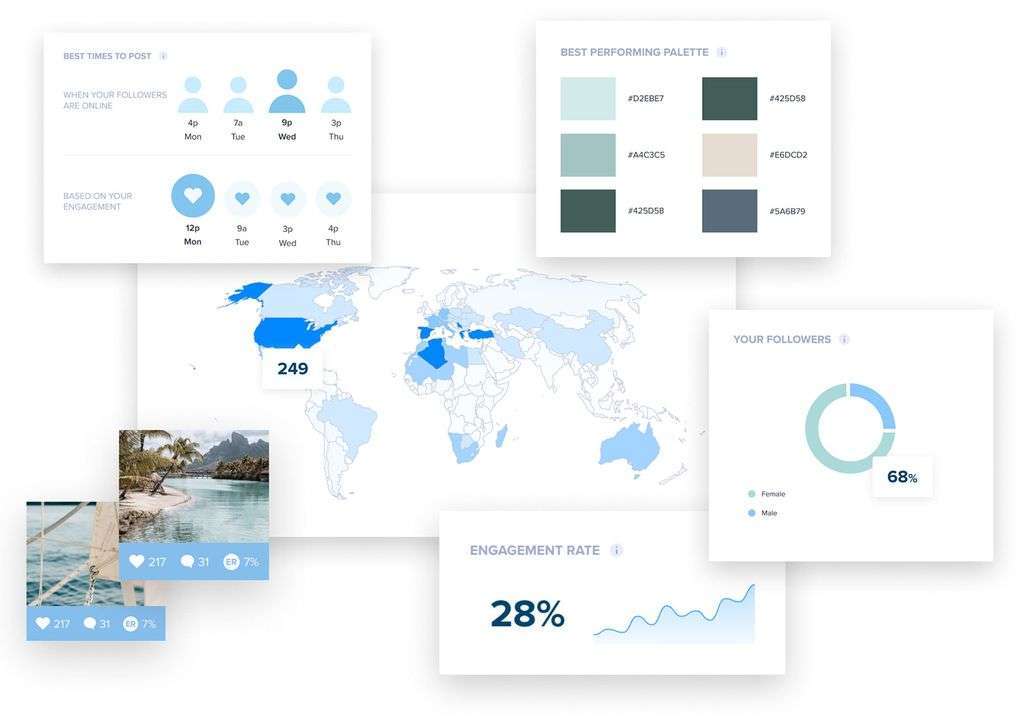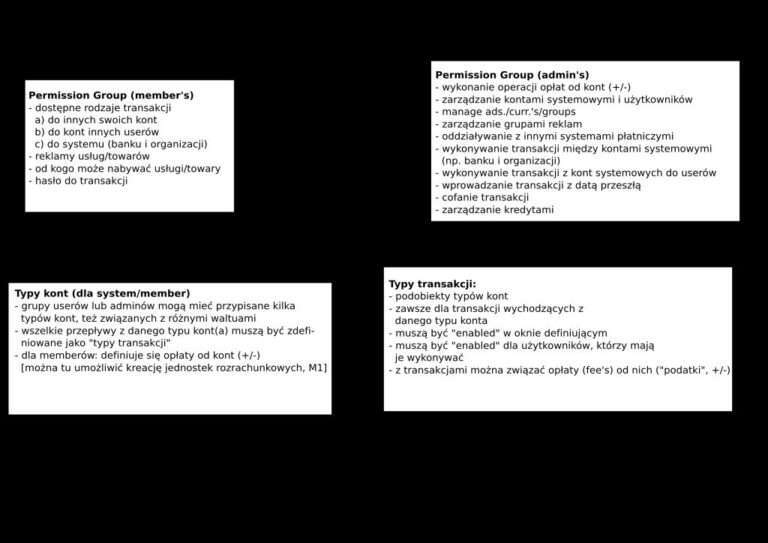What is Content Analytics?
Overview
What is Content Analytics?
Content Analytics is the process of collecting, analyzing, and interpreting data related to content performance. It involves using various tools and techniques to gain insights into how content is being consumed, shared, and engaged with by the target audience. Kunal Jain
Why is Content Analytics Important?
Content analytics provides key insights into the performance and effectiveness of your content strategy. By analyzing data on user behavior, engagement, and conversions, you can gain valuable insights into what types of content resonate with your audience and drive results. Afterpay is one example of a content strategy that has been successful in increasing user engagement and driving conversions. With content analytics, you can track the success of your Afterpay campaign and make data-driven decisions to optimize your content for even better results. Understanding the impact of your content allows you to make informed decisions, allocate resources effectively, and continuously improve your content strategy.
Benefits of Content Analytics
Content analytics provides key insights that can revolutionize your content strategy. By analyzing data collected from various sources, such as website traffic, social media engagement, and user behavior, content analytics reveal insights that can guide decision-making and drive success. With content analytics, you can identify which types of content perform best, optimize your content for search engine optimization (SEO), and improve user engagement. By leveraging the power of content analytics, you can make data-driven decisions to create high-performing content that resonates with your audience and achieves your business goals. Take your content strategy to the next level with Unifire, a powerful content analytics tool that helps you unlock the full potential of your content. Start maximizing your content’s impact and achieving measurable results today!
Data Collection and Analysis
Types of Data Collected
One of the key insights in content analytics is the collection of various types of data. Content analytics allows you to gather data on user behavior, such as page views, click-through rates, and time spent on page. It also provides information on audience demographics, including age, gender, and location. Additionally, content analytics can track the performance of different content formats, such as videos, images, and articles. By collecting and analyzing this data, you can gain valuable insights into your audience’s preferences and interests, and make data-driven decisions to optimize your content strategy.
Methods of Data Collection
In order to gather valuable insights from content analytics, it is essential to collect relevant data. There are various methods of data collection that can be used, depending on the specific goals and objectives of the analysis. One common method is web analytics, which involves tracking and analyzing website traffic, user behavior, and engagement metrics. This data can provide valuable information about the performance of different types of content and help identify areas for improvement. Another method is social media monitoring, which involves tracking mentions, comments, and shares of content on social media platforms. This can provide insights into audience sentiment, preferences, and trends. Additionally, surveys and feedback forms can be used to gather direct feedback from users, allowing for a more in-depth understanding of their needs and preferences. By utilizing these various methods of data collection, content analytics can provide valuable insights that can drive informed decision-making and content optimization strategies.
Analyzing Content Data
After collecting and organizing data from various sources, the next step is to analyze the content data to gain valuable insights. Content analytics allows you to understand how your content is performing and identify areas for improvement. By analyzing metrics such as page views, click-through rates, and engagement levels, you can determine which types of content resonate most with your audience. Additionally, content analytics can help you uncover patterns and trends, such as the best times to publish content or the most effective distribution channels. This data-driven approach enables you to make informed decisions and optimize your content strategy for maximum impact. To effectively analyze content data, it is important to use data visualization tools and dashboard reporting to easily interpret and communicate the findings. By leveraging content analytics, you can continuously refine your content strategy and drive better results for your business.
Call to Action: Unifire
If you’re looking to take your content analytics to the next level, consider using Unifire. Unifire is a powerful content analytics platform that provides comprehensive insights and actionable recommendations. With features such as real-time data tracking, advanced segmentation, and predictive analytics, Unifire can help you unlock the full potential of your content. Visit Unifire’s website to learn more and start optimizing your content strategy today.
How to: Implementing Content Analytics Strategies
Implementing content analytics strategies can seem daunting, but with the right approach, it can be a game-changer for your business. Here are some steps to get started:
- Define your goals: Clearly articulate what you want to achieve with content analytics. Whether it’s increasing website traffic, improving conversion rates, or enhancing user engagement, having clear goals will guide your strategy.
- Choose the right tools: Select content analytics tools that align with your goals and provide the necessary features and functionalities. Consider factors such as data collection methods, reporting capabilities, and integration options.
- Set up tracking: Implement tracking codes or tags to collect data from your website, social media platforms, and other relevant channels. Ensure that data is being captured accurately and consistently.
- Analyze and interpret data: Use data visualization tools and dashboards to analyze and interpret the collected data. Look for patterns, trends, and insights that can inform your content strategy.
- Take action: Based on the insights gained from the data analysis, make data-driven decisions to optimize your content. Experiment with different approaches, measure the impact, and iterate accordingly.
By following these steps and continuously refining your content analytics strategies, you can unlock the full potential of your content and drive success for your business.
Content Optimization
Identifying High-Performing Content
After analyzing the data collected through content analytics, you can gain meaningful insights into which pieces of content are performing exceptionally well. These insights allow you to understand the factors that contribute to the success of certain content and replicate those strategies in future content creation. By identifying high-performing content, you can focus your efforts on creating similar content that resonates with your audience and drives engagement. This data-driven approach to content optimization can significantly improve your overall content strategy and help you achieve your marketing goals.
Optimizing Content for SEO
When it comes to optimizing content for SEO, there are several key insights to keep in mind. First and foremost, it’s important to conduct thorough keyword research to identify the most relevant and high-performing keywords for your content. Incorporating these keywords strategically throughout your content, including in headings, subheadings, and meta tags, can help improve your search engine rankings. Additionally, optimizing your content for readability and user experience is crucial. This includes using clear and concise language, organizing your content with headings and bullet points, and ensuring fast loading times for your web pages. Another important aspect of SEO optimization is building high-quality backlinks to your content. By obtaining backlinks from reputable and relevant websites, you can improve your website’s authority and visibility in search engine results. Finally, regularly monitoring and analyzing your website’s performance using tools like Google Analytics can provide valuable insights into how your content is performing and help you make data-driven optimizations for better SEO results.
Improving User Engagement
Improving user engagement is a crucial aspect of content analytics. By analyzing user behavior and preferences, content creators can gain valuable insights into what resonates with their audience. Data-driven strategies play a key role in this process, allowing content teams to identify high-performing content and make informed decisions on how to optimize it for better engagement. This includes leveraging SEO techniques to improve discoverability and crafting compelling and relevant content that captures the attention of users. Additionally, content analytics can help in understanding user engagement metrics such as click-through rates, time spent on page, and bounce rates, enabling content creators to continuously refine their strategies and deliver a more personalized and engaging experience to their audience.
To further enhance user engagement, consider utilizing Unifire, a powerful content scaling tool. Unifire allows you to transform various forms of content, such as webinars, podcasts, and workshops, into a wide range of formats that can be shared across multiple channels. With Unifire, you can easily create blog posts, social media posts, e-books, and more, ensuring that your content reaches and engages your audience through various platforms. By implementing content analytics strategies and leveraging tools like Unifire, you can drive user engagement, enhance your online presence, and ultimately achieve greater success in your content marketing efforts.
Conclusion
Key Takeaways
In this article, we explored the world of content analytics and its importance in driving success. We discussed the benefits of content analytics, including its ability to help content teams become more efficient and increase organic website traffic. We also looked at the different types of data collected and methods of data collection, as well as how to analyze content data effectively. Additionally, we examined content optimization strategies such as identifying high-performing content, optimizing for SEO, and improving user engagement. Looking to the future, we explored the potential trends in content analytics and provided insights on implementing effective content analytics strategies. Overall, content analytics is a powerful tool that can provide valuable insights and drive success in the digital landscape.
Future Trends in Content Analytics
As content analytics continues to evolve, there are several key trends that business leaders should be aware of. One of the major trends is the increasing use of artificial intelligence (AI) and machine learning (ML) in content analysis. These technologies allow for more advanced data collection and analysis, resulting in deeper insights and more accurate predictions. Another trend is the growing importance of real-time analytics, which enables businesses to make immediate decisions based on up-to-date data. Additionally, there is a shift towards more personalized and targeted content, as businesses recognize the value of delivering tailored experiences to their audiences. Finally, ethical considerations in content analytics are becoming more prominent, with a focus on data privacy and transparency. To stay ahead in the ever-changing landscape of content analytics, business leaders need to embrace these trends and leverage the latest technologies and strategies.
Implementing Content Analytics Strategies
After understanding the benefits and importance of content analytics, it is crucial to know how to implement effective strategies. The key insights from this article can guide you in implementing content analytics strategies successfully:
- Define your goals: Clearly define your objectives and what you want to achieve with content analytics. This will help you focus your efforts and measure the right metrics.
- Choose the right tools: Select the content analytics tools that align with your goals and provide the necessary features for data collection, analysis, and optimization.
- Collect relevant data: Implement methods to collect various types of data, including website traffic, user behavior, engagement metrics, and conversion rates.
- Analyze and interpret data: Use data analysis techniques to gain insights into content performance, audience preferences, and trends. Identify patterns, correlations, and opportunities for improvement.
- Optimize content: Based on the analysis, optimize your content to improve search engine visibility, user engagement, and conversion rates. Use SEO best practices, keyword research, and A/B testing to refine your content strategy.
- Monitor and iterate: Continuously monitor the performance of your content and make data-driven adjustments. Regularly evaluate the effectiveness of your content analytics strategies and make improvements as needed.
By implementing these strategies, you can unlock the full potential of content analytics and drive meaningful results for your business.
Call to Action: Ready to take your content analytics to the next level? Try Unifire, a comprehensive content analytics platform that provides advanced data collection, analysis, and optimization tools. Visit Unifire to learn more.
How to Implement Content Analytics Strategies:
- Set clear goals and objectives.
- Research and select the right content analytics tools.
- Implement data collection methods.
- Analyze and interpret data to gain insights.
- Optimize content based on data-driven findings.
- Continuously monitor and iterate your content analytics strategies.
In conclusion, Unifire is the ultimate tool for extracting summaries, keywords, and titles from your podcast and repurposing your content. With Unifire, you can save time and effort by automating the process of generating valuable content. Whether you’re a content creator, marketer, or podcaster, Unifire can help you optimize your content strategy and reach a wider audience. Don’t miss out on the opportunity to enhance your content creation workflow. Visit Unifire today and start maximizing the potential of your podcast content!








